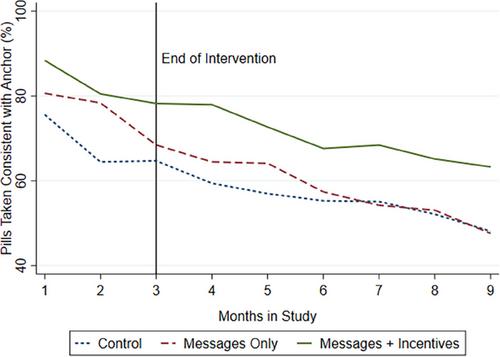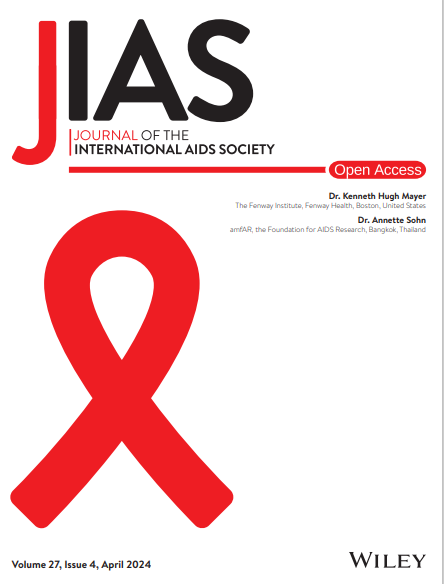INcentives and ReMINDers to Improve Long-Term Medication Adherence (INMIND): impact of a pilot randomized controlled trial in a large HIV clinic in Uganda
Abstract
Introduction
Habits are a common strategy for successfully countering medication non-adherence, yet existing interventions do not support participants during the long habit formation period, resulting in high attrition. We test a novel intervention combining text messages and incentives with anchoring to support antiretroviral therapy (ART) pill-taking habits.
Methods
In a randomized, parallel controlled trial, a sample of 155 participants 18 years and older who initiated ART within 3 months were recruited at Mildmay Uganda between October 2021 and April 2022. All participants were educated on the anchoring strategy and chose an anchor, that is existing routines, to pair with pill-taking. Participants were randomized to either usual care (C = 49), daily text message reminders to follow their anchoring plan (Messages group; T1 = 49) or messages and incentives conditional on pill-taking in line with their anchor (Incentives group; T2 = 57). Assessments occurred at baseline, month 3 (end of intervention) and month 9 (end of observation period). The primary outcomes are electronically measured mean adherence and pill-taking consistent with participants’ anchor time.
Results
The primary outcome of pill-taking in line with the anchoring plan was higher in the Incentives group during the 3-month intervention (12.2 p.p. [95% CI: 2.2 22.2; p = .02]), and remained significantly higher after the incentives were withdrawn (months 4−6 (14.2 p.p. [95% CI 1.1 27.2; p = .03]); months 7−9 (14.1 p.p. [95% CI −0.2 28.5; p = .05])). Mean adherence was higher in both treatment groups relative to the control group during the intervention (T1 vs. C, p = .06; T2 vs. C, p = .06) but not post-intervention.
Conclusions
The promising approach of using incentives to support habit formation among ART treatment initiators needs to be evaluated in a fully powered study to further our understanding of the habit formation process and to evaluate its cost-effectiveness.


 求助内容:
求助内容: 应助结果提醒方式:
应助结果提醒方式:


